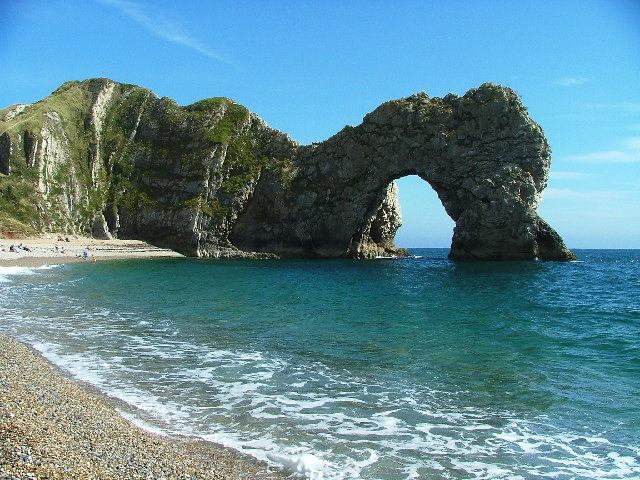Read One Young Fool in Dorset Online
Authors: Victoria Twead
Tags: #childhood, #memoir, #1960s, #1970s, #family relationships, #dorset, #old fools
One Young Fool in Dorset (4 page)
Jeannie was friendly, happy, and obedient. She was
gentle and loved everybody. Even my mother couldn’t help herself
and was fond of Jeannie.
At breakfast, the morning after we’d lost Timmy the
tortoise, I was still miserable. My mother suddenly spoke up.
“What about Jeannie?” she said.
“Jeannie? Mrs Cox’s dog Jeannie?” asked my father.
“What about her?”
“You know how clever she is? And she’s a retriever,
yes?”
“Of course.”
“
Ach
, why don’t we ask Mrs Cox to bring
Jeannie round here and see if they can find Timmy?”
“Worth a try, I suppose, but I don’t hold out much
hope.”
My father was doubtful but I was ecstatic. I was
sure
clever Jeannie would find Timmy.
Later that morning, we all traipsed round to Mrs
Cox’s house and my mother explained the situation.
“I think Jeannie and I might be able to help,” said
Mrs Cox, one hand on Jeannie’s soft head. “Let’s go round to your
place and see what we can do.”
Back in our garden, we stood and watched.
Mrs Cox took Jeannie to Timmy’s run. She lifted the
roof off Timmy’s little house and Jeannie snuffled the straw
inside, her feathery tail lashing in wide sweeps. Then she looked
up at Mrs Cox for instructions.
“Jeannie, go find it!”
Jeannie flew down the garden path and bounded onto
the lawn. We all followed at a run.
“Go find it!” repeated Mrs Cox, panting.
Jeannie zigzagged across the lawn, nose down, tail
high. We trailed her. At the lawn’s edge, she paused and looked up
at her mistress as though asking for permission.
“Jeannie, go find it!” said Mrs Cox.
Jeannie plunged into the flowerbed and I heard my
mother’s sharp intake of breath as her precious plants were pushed
aside. Jeannie weaved her way through and out the other side. With
her wet, black nose inches from the ground, Jeannie continued down
another path, along the side of a hedge, then paused at my mother’s
compost heap.
The compost heap was a giant box constructed by my
father with slats of wood. In very cold weather you could see it
steaming. On warm days I sometimes saw slow-worms (harmless legless
lizards, not worms at all) sunning themselves on top.
We all stopped, a little out of breath. Jeannie was
panting now, pink tongue lolling, tail swishing hard and fast. She
gave a low
woof
and waited for Mrs Cox to speak.
“Does Jeannie know where Timmy is?” I asked.
“I think so,” said Mrs Cox. “Jeannie, go find
it!”
Jeannie gave another deep
woof
and
disappeared behind the compost heap. We waited, but not for long.
Within moments, Jeannie backed out, feathery tail waving like a
triumphant flag. In her soft mouth was Timmy.
“She found him!” I squealed.
Jeannie walked over to Mrs Cox and sat down in front
of her. She was so gentle, and her mouth was so soft, that Timmy
hadn’t even withdrawn into his shell. His legs were still waving
indignantly, pedalling the air.
“Good girl, Jeannie!” said Mrs Cox. “Drop it. Leave.
Good girl.”
Obediently, Jeannie set Timmy down. Timmy, relieved
to have solid ground under his feet, set off again.
“Oh, no you don’t,” I said, and grabbed my athletic
pet.
Jeannie was the heroine of the day and was rewarded
with hugs, praise, and a bowl of cold water. An unrepentant Timmy
was replaced in his run to plot his next break for freedom.
 My brother,
My brother,
Jeannie and me
* * *
To a child, summer lasts for ever. Days were long
and my brother and I were often sent to bed before the stars popped
out, and before the glow worms lit their lamps in the grass. In the
morning, I could run barefoot across the lawn, leaving a trail of
zig-zag footprints in the dew. Soon, the sun rose high in the sky
and dried the dew, leaving no sign of my crazy dance.
I checked the little fairy houses I had made with
sticks and leaves in secret parts of the garden. Of course I didn’t
believe in fairies, I told myself, but just
in case
they
existed, I’d give them nice houses to live in.
Summer also meant visits to the beautiful beaches of
Dorset. In that part of the world, one is spoilt for choice. Lesser
known beaches, like Dancing Ledge and Chapman’s Pool could only be
reached after a walk of many miles across heathland and down farm
tracks.
But it was worth it. These wonderfully wild beaches
are unique. At Dancing Ledge there is a natural pool cut out of the
rock, much like an infinity pool with a sea view. At the turn of
the tide, the pool becomes a jacuzzi as the water churns. It was
far too dangerous for us children to be allowed to swim, but there
were still plenty of rock pools to explore. Sometimes we took big
pieces of seaweed home and hung them from trees. Apparently they
made good weather forecasters: slimy seaweed meant wet weather
ahead, while crisp, dry seaweed meant sunny spells to come.
Another favourite was Worbarrow Bay with its ghost
village which sent shivers down my spine and my imagination into
overdrive. I stared past the ropes at the empty cottages where
people used to live. In those days, the beach was only open to the
public on rare occasions, and you couldn’t enter the village of
Tyneham at all. The reason for this was that the Army used the
surrounding land for driving tanks and armoured vehicles, and the
whole area was a firing range.
In 1943, the War Office commandeered the entire
acreage, including the little village of Tyneham. The War Office
declared that it needed the land, beach and village to carry out
military manoeuvres. The residents of Tyneham had no choice. Every
family was forced to pack up and leave, abandoning their homes,
school, and church. It must have been a devastating time but they
were promised they could return after the war was over.
But it wasn’t to be. World War II ended, but in 1947
the Army placed a compulsory purchase order on the land, and the
villagers were never allowed to return.
The ghost village of Tyneham still stands, though it
has fallen into disrepair and is damaged by practice shell fire.
The church and schoolhouse, however, are intact and are now
museums, I am told. And something very good came out of the Army
owning the land. Because it is largely left alone by humans, and
not cultivated in any way, the land now supports rare plants, birds
and wildlife.
Oh, the joy of living along the Jurassic coastline
where fossils revealed themselves as though clamouring for
attention. We often visited Kimmeridge Bay. The village of
Kimmeridge is tiny and very picturesque. The estimated population
in 2013 was just 90. But Kimmeridge is well worth a visit for two
good reasons, both of which I loved as a child.
First, it had an awesome folly. Perched precariously
on the cliff edge and overlooking the semi-circular bay, was the
folly known as Clavell Tower, which inspired P.D. James’s novel,
The Black Tower
.
Who built it, and why? I didn’t know. I imagine the
person who built it thought it would stand proudly for ever.
Indeed, there used to be space for horse-drawn carriages to drive
on the strip of land between folly and cliff edge. But the cliff
was constantly being eroded by the weather and the sea below. The
folly was now mere feet away from the edge of the cliff and in real
danger of collapsing into the waves beneath. Every time we visited
the bay, I checked to see whether the folly was still standing, or
had collapsed into its inevitable watery grave.
 Clavell Tower as
Clavell Tower as
it was
To my astonishment, I recently learned that the
folly survived for many more years. Finally, in 2006, it was taken
over by the Landmark Trust which rescues eccentric buildings and
converts them into holiday homes. They dismantled Clavell Tower and
re-erected it on a firmer foundation 82 feet further inland.
Now it looks almost the same as it did when I was a
child, except that it’s no longer ruined, or in danger, and boasts
a stunning interior with four floors of beautifully styled rooms. I
imagine a few days’ stay in this spectacular building, surrounded
by breath-taking views, with the waves breaking beneath the cliffs,
would make a truly unforgettable holiday.
The second attraction for me was fossils. The shale
at Kimmeridge is soft and constantly crumbling, making the finding
of ammonites easy.
“I’ve found one!”
“Me too!”
“And me!”
Ammonites, with their characteristic ribbed, spiral
shell are probably the most widely known fossil. These creatures
lived in our seas some 240 million years ago, before they became
extinct along with the dinosaurs. It was awesome to uncover such an
ancient thing. The windowsill in my bedroom became cluttered with
the ammonite fossils I had found. I could never bear to part with
them, and I know they came with me when I moved to Spain forty
years later. I haven’t seen them for a long time; perhaps they are
languishing in a box somewhere. Perhaps some future fossil hunter
may come across them in decades to come and wonder how Dorset
fossils could possibly be found in the mountains of southern
Spain.
But sometimes we visited beaches simply because they
were beautiful. Durdle Door is a perfect example of a stunning
setting, and often used in films, including the unforgettable
Far From the Madding Crowd
.
 Durdle
Durdle
Door
But my very favourite beach was much more ordinary,
or so I thought when we first started visiting it.
My mother didn’t enjoy driving. She refused to drive
any car at all, even though she had passed her driving test many
years earlier. Then one day, my father came home with an old
ex-army Land Rover. It had a torn canvas roof that was rolled back
and tied at various points.
“Get in,” he said handing her the ignition key.
“Turn the engine on, see how it feels.”
“
Ach,
this is not so bad,” she said. “I feel
high, much safer than an ordinary car. If I scratch it, it wouldn’t
really matter, would it? And I like that the engine is loud because
I can hear what I’m doing.”
She crunched the gears to demonstrate. My father
winced.
The Land Rover had seen better days and was badly in
need of a coat of paint, so my mother bought some and opened the
lid. She peered at it, then dipped in her paintbrush.
“This is supposed to be dark green!” she said, as
she began painting.
“Ach,
never mind. It’s not a bad colour.
It’s like variegated ivy leaves.”
The name stuck, and Ivy joined the family.
We kids loved Ivy. There were no seats in the back.
We just sat on the floor holding onto anything we could, slipping
and sliding and landing in a tangled heap when Ivy sailed round
bends. It was great fun.
Sometimes we’d get up early and my mother would
drive us to some local fields where we picked mushrooms. Ivy’s big
tyres left tracks in the silver dew.
